 Below are maps of Gangwon Province (江原道 - 강원도) and Ulleungdo (鬱陵島 - 울릉도) from the Korean atlas "Yeojido" (輿地圖 - 여지도), which is believed to have been made sometime between 1736 and 1767. The map of Gangwon Province is called "Gwandongdo" (關東道 - 관동도), which was an old name for the Gangwon Province region. The maps and atlas are stored in Seoul National University's Kyujanggak Center for Korean Studies.
Below are maps of Gangwon Province (江原道 - 강원도) and Ulleungdo (鬱陵島 - 울릉도) from the Korean atlas "Yeojido" (輿地圖 - 여지도), which is believed to have been made sometime between 1736 and 1767. The map of Gangwon Province is called "Gwandongdo" (關東道 - 관동도), which was an old name for the Gangwon Province region. The maps and atlas are stored in Seoul National University's Kyujanggak Center for Korean Studies.The interesting thing about the Gwandongdo map is that Ulleungdo is shown with the label "鬱陵干山兩島" (울릉간산양도) which means "the two islands of Ulleung and Usan." (干山島 was a misspelling of 于山島.) The fact that both names were written on one island suggests that "Usan" (于山) was just a neighboring island of Ulleung island (鬱陵島) . We can assume that Ulleung was the larger island since it was written first. That assumption is confirmed by the Ulleungdo (鬱陵島 - 울릉도) map below, which is in the same book (Book 5) of the atlas and shows a small island off Ulleungdo's east shore labeled as "所謂 干山島" (소위 간산도), which means "the so-called Usando." Notice that the Ulleungdo map has the same spelling error (干山島) for "Usando" (于山島). Notice also that in addition to Usando, the Ulleungdo map shows five small islands off Ulleungdo's southern shore, which was a common feature of Korea's Ulleungdo maps.
In the geography section of the Annals of King Sejong in 1454, Ulleungdo was mentioned in the section describing Uljin-hyeon (蔚珍縣) as follows.
于山武陵二島在縣正東海中二島相去不遠 風日淸明則可望見Korea uses the above passage to claim that Usan was "Dokdo" (Liancourt Rocks), and that the distance being talked about was the distance between Dokdo and Ulleungdo ("Muleung" was an alternate spelling for Ulleungdo), but Japan claims that the distance was a referrence to the distance between Uljin-hyeon and the two islands. The map below, which shows the two islands as just neighboring islands, supports the Japanese claim.
The two islands of Usan (于山) and Muleung (武陵) are in the sea due east of this hyeon. The distance to the two islands is close enough that they can be seen on a clear day when the wind is blowing.
By the way, notice in the above passage that Usan (于山) was written before Ulleung (鬱陵), which suggests that Usan was considered the larger island at the time the passage was written. That would explain why the old maps of Ulleungdo showed Usan to the west of Ulleungdo.
Both the "Gwandongdo" map and the Ulleungdo map came with attached notes, which are also shown below. The "Gwandongdo" map notes mentioned such things as the population of the region and the number of fields and paddies. The Ulleungdo map notes gave the size of the island and listed the flora and fauna found there.
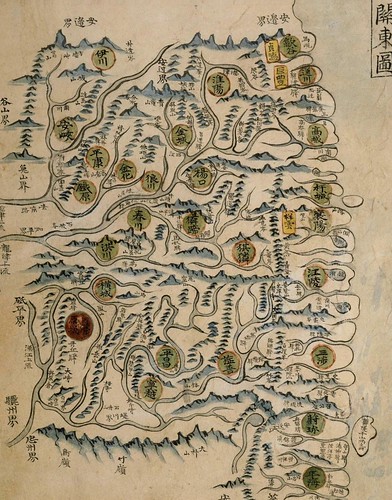
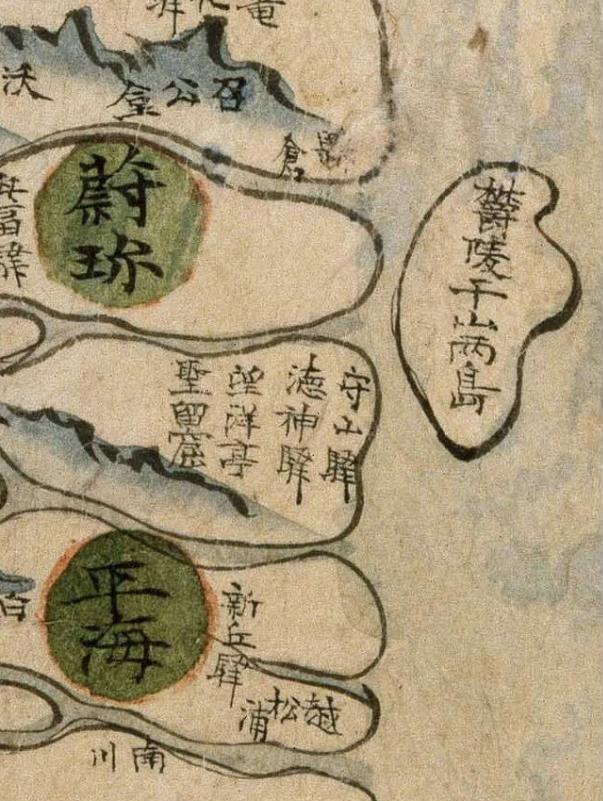
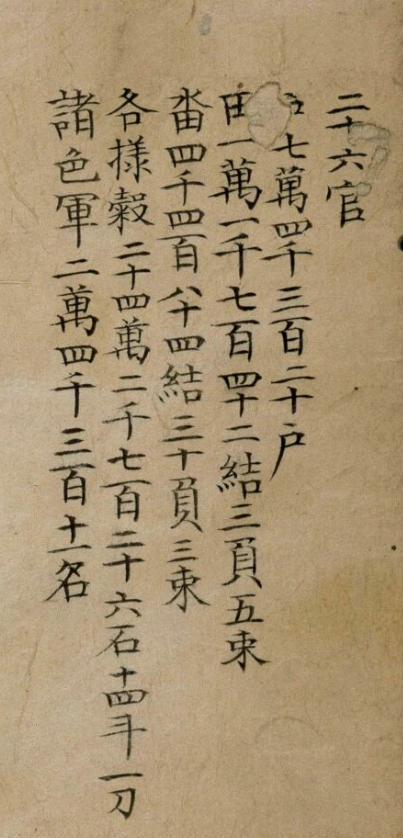

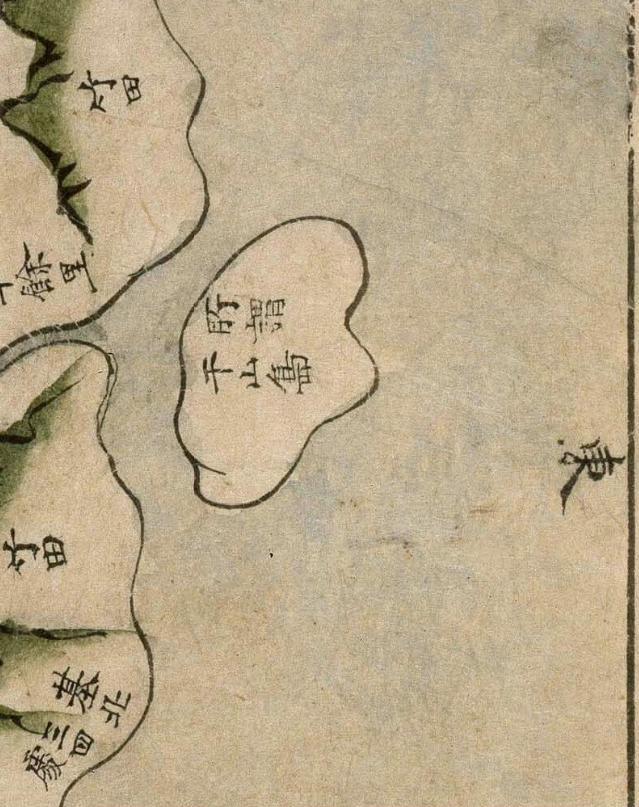
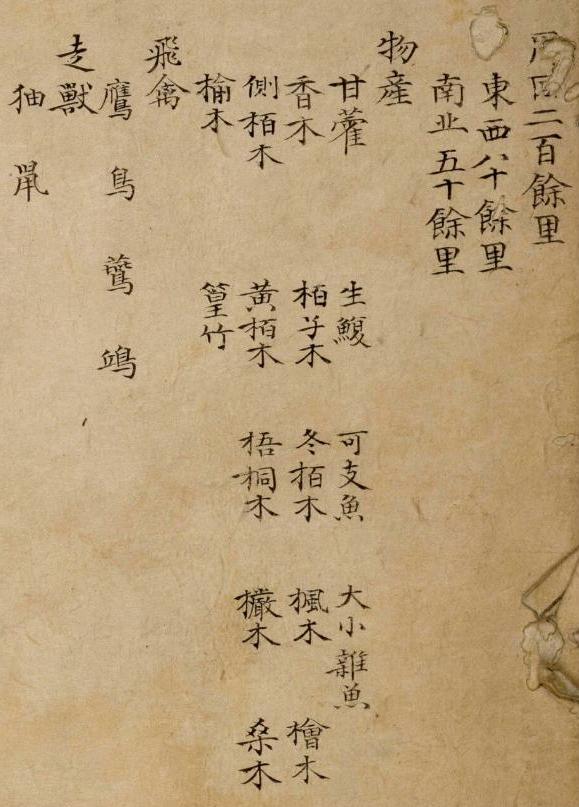
Thanks for making such a blog, it's great to see some interest on this issue. Personally, I think it is extremely unreasonable for Japan to claim that Dokdo is theirs out of nowhere, after hundreds of years of the island being Korean territory.
ReplyDeleteAlso, I find it very funny that Dokdo has to even be disputed between Japan and Korea as Lioncourt Rocks instead of as Dokdo. So here's my two cents.
ReplyDeleteanonymous,
ReplyDeleteThanks for your opinion, but please remember that there is no reason to say Dokdo (Liancourt rocks) is Korean territory.
Korean government has insisted since the brutal occupation by Rhee Syngmann in 1952 that Dokdo is Korean territory because Dokdo is Usan or Usando in the old Korean documents, but as you can clearly see, Usan or Usando was not Liancourt rocks.
The name Dokdo was created in the 20th century. There was no Korean names for Liancourt rocks until then.
Korean government should admit now that Rhee Syngmann had taken a grave mistake - he took another country's island, or should we say that he invaded Japan.
I think the serials of maps are clearly saying that Dokdo existed well before the 20th century, under recognition of who are today, the Koreans. Thus I think there are relevance to call Dokdo a Korean territory. Why are the Japanese claiming it theirs out of the blue is what you should state
ReplyDelete'there is no reason'
anonymous,
ReplyDeleteThe series of maps don't show Liancourt rocks but Ulleungdo and its neiboring islands including Jukdo (sometimes Usando).
So are you insisting that Jukdo is Dokdo?
If you think so, Korea should give Liancourt rocks to Japan.
Mr. Anonymous,
ReplyDeleteYou seem to be looking at these maps with your eyes closed. The Usando (于山島) on these maps is NOT "Dokdo." It was almost certainly Ulleungdo's neighboring island of Jukdo, and even some Koreans are starting to admit that, for example, the Dokdo Museum director.
Also, here is what Lee Gi-bong (이기봉) said of the Ulleungdo map on Seoul National University's Kyujanggak site:
"오른쪽에 있는 于山島는 여러 사람에 의해 현재의 獨島로 인식되기도 하지만 분명하지는 않다. 울릉도 본 섬 주위에 있는 작은 섬 중 가장 큰 관음도나 죽도를 가리킬 수도 있기 때문이다."
Other maps that shows Usando is other name of Ullungdo,one island twin names.
ReplyDelete18C中頃『八道輿地圖』 江原道
韓国国立中央図書館 古2702-14
http://www.dlibrary.go.kr/Map/main.jsp
1736-67『輿地圖』関東圖 4709-68
1776-1787『地乘』 江原道 15423
光(広?)輿図 江原道 関東圖
I created Korean map list with chronogically order,just for personal use.Those maps shows,
1.Usando is a rumor island.(till 1696)
2.Usando is Jukdo(After 1696)
Though there are some unclassified maps unuploaded in the site.
3.Usando is never Liancourt rocks(Takeshima/dokdo)
http://www16.tok2.com/home/otakeshimaoxdokdox/
GTOMR,
ReplyDeleteCould you add 「松島絵図」 to your list?
1656 (明暦ニ)年頃 - 村上家「松島絵図」(Map of Matsushima by the Murakami Clan)
http://www.pref.shimane.lg.jp/soumu/web-takeshima/takeshima04/takeshima04_01/takeshima04d.data/5-3-2-01.pdf
(Sanin-Chuo-Shinpo article: 松島を単独で描いた絵図。入り江や周辺の岩礁などの位置が、韓国・国立海洋調査院が2001年に刊行した現代の竹島の海図とほぼ一致。また、絵図の右上に「松嶋之絵図、嶋之惣廻り壱里之内-」といった表記があり、二つの島からなる松島の周囲の長さなどが記されている。隠岐島や韓国・鬱陵島との距離表記もあり、鬱陵島から松島までの距離が約五十五キロとなっている。 This Map of Matsushima( Today's Liancourt Rocks) describes the isnald alone. It clearly shows that Matsushima was not considered an attached to Takeshima, but also an important destination for Murakawa family. It accurately describes Matsushima (Liancourt Rocks) as being two islands and shows the distances from Oki and Ulleungdo (鬱陵島) http://www.sanin-chuo.co.jp/news/modules/news/article.php?storyid=345569179)
And I think Usand was Ulleundo's another name from 1417 - 1425, not just a mystery island. Before that, Usanguk was used to refer as a whole islands. See my list.
512 - 1694 竹島一件以前の韓国(朝鮮)古文書に於ける鬱陵島と竹嶼の名称の変遷についての悉皆的分析の試み (Experimental analysis for the transition of names of Ulleundo and Jukdo in Korean old documents before Ahn Yong Bok's incident in 1696.)
But Usando and Ulleundo(Meulleundo) somehow getting confused in 1436. When Geography documents like 1452「高麗史」地理, 1454「世宗実録」 地理, 1481「東国輿地勝覧」, 1530「新増東国輿地勝覧」, 1656 柳馨遠「東国輿地志」, 1662 許穆「陟州誌」 were compiled, Choson officials are not sure if Usando and Ulelundo are two islands or one islands with two names. Then when Ahn's incident happened, Ahn's Usando(=Jukdo) became Usando. But yes, there had never been the time when Usando specifically referred Takeshima/Liancourt Rocks/Dokdo in any time.